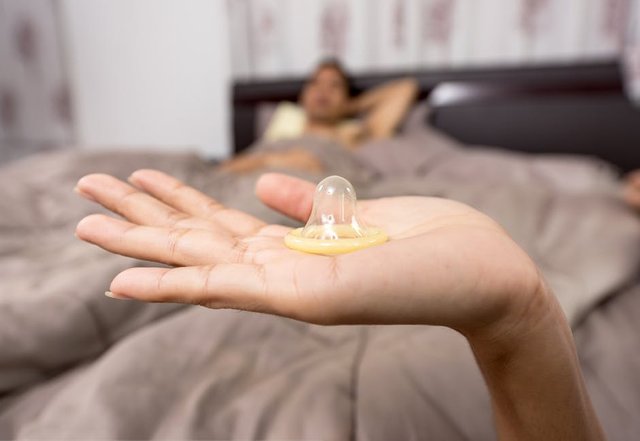OMG – I have a teenager at home! (The Psychology of Adolescence) – Part 4

He grows a size in a month; he is moody, aloof and sarcastic; he wears strange clothes; he hangs out with an annoying gang... so you may ask: „where is the kid I used to know?" – Well, the answer is just one word: adolescence... This is a very important stage in our life, still, people usually do not have enough information on it. I am often asked by parents „what should I do with my teenage kid?", and it usually turns out that these parents have no clue about the physical and mental changes and challenges their children are facing during these years. Having two adolescent sons, I wish to give an insight into this transitional period with this series.
In the first and second parts of this series I was dealing with the characteristics of healthy adolescents, but I think it is worthwhile to have a look at the other side of the coin, so the third part was dedicated to eating disorders and today I will continue with the most important sexual disorders.

Adolescents and sexuality
Sexuality is one of the „main topics" in the mind of the forming adolescent identity. In this life period, adolescents are generally experimenting with different behaviors (as I mentioned in the previous parts of this series, quite often they even engage in risky behaviors), so this applies for sexuality, too.
The movie series, American Pie draws a somewhat humorous, but valid picture of teenage sexuality. If we have an adolescent kid, we have to be prepared for this period and understand what's going on in his or her mind. The basic problem here probably is, that while biologically and hormonally they feel ready for establishing a sexual relationship, their emotional and psychological development is way behind their bodily endeavors.
They often talk about sex and they like to pretend that they are very experienced in this field. Their brain is flooded by hormones which make them centered around this topic. Voyeurism is frequent, they do everything to watch the other sex – actually, it is quite typical and normal at an adolescent age, boys for example like to peep in girls' dressing rooms.
According to a 2016 research in Hungary, teenagers start their sexual life around the age of 16 years on average, while their first serious love relationship (first close emotional bond to a partner) only happens around the age of 18. I guess this is in line with the international tendencies: we can conclude that teenagers usually start their sexual life earlier than forming a close, emotional relationship. In many cases, they run a competition for having their first sexual contact, and in this aspect girls and boys show almost no difference.
Curiosity, the approval of peers, rebelling against an overly restrictive parent, nice fantasies about the sexual relationship can all play a role in why they actually start sexual activity. Promiscuity can also happen, but in this aspect, there is a difference between boys and girls. Boys may be proud of having many relationships, whereas in case of girls this is usually a sign of deprivation, where they seek love and acceptance through these encounters.
This is a field where the tons of NSFW and other sexually-related materials available via the internet is quite a setback: these contents often reflect emotionless and pervert sexual behaviors as normal, which patterns can easily stick into the curious adolescent mind. A loving, caring family usually provides good relationship patterns for adolescents, but lacking this background can make it difficult.

What is a sexual disorder and what is not?
A few hundred years ago perversion was defined in a completely different way than nowadays. Today the Psychology Dictionary defines perversion
this way:
"a term given to any sexual practice that is regarded by a community as abnormal. It applies to any practice that is the penile-vaginal intercourse."
Therefore perversion is what the community regards abnormal – today society is more open and tolerant from this aspect than in previous centuries when ‘normal' sexuality was supposed to happen exclusively in a heterosexual intercourse via the primary genitals (even Sigmund Freud defines normality this way in his infamous book ‘Three Essays on the Theory of Sexuality'). We used to learn at the university that normal sexuality is what both parties consider enjoyable – well, again a questionable definition, but I tend to regard those behaviors perversions where a partial instinct is dominant instead of the primacy of the genital instinct (this is the modern psychoanalytic view). This means that the person is stuck in an earlier developmental phase and could not reach (completely) the genital stage.

The origin of sexual disorders
As it was mentioned earlier adolescence is characterized by very strong sexual drives and experimentation as well as the need to discover the self. This may cause frustration, guilt and bad feelings, especially in a restrictive and rejecting family background.
There is a very interesting book written by Lívia Nemes, one of the leading psychoanalysts in Hungary, titled "A bennünk élő gyermek" (The Child Within Us). In this, she draws a parallel between neurosis and perversions stating that while in both cases the patient tries to suppress some kind of infantile sexual energy, it is only "successful" in case of neurosis. (The resulting symptom keeps a balance, therefore the patient is able to function and adapt to society to some extent.) In case of perversions, however, this suppression was not complete, therefore sexual excitement returns in certain – very strict – conditions and the patient experiences sexual gratification. (Which then works as a reinforcement, therefore the person will strive for repeating the experience.)
It is very important to note about perversions, that in this case the person usually has no intention to establish a relationship (though sometimes the appearance would suggest it). For example if you look at a sadomasochistic couple, on the surface their bond would probably look like a relationship, however, they are just using each other as tools to gratify their own passion and gain sexual fulfillment. (Both of them are driven by their own sexual fixation.)

Fetishism
We are talking about fetishism when the sexual arousal is associated with non-living objects (often materials, like fur or silk or clothes, especially underwear or female shoes). The fetish may entirely replace sexual activity with a partner, or in case of a cooperating partner, it can be integrated into the sexual play. A similar disorder is called partialism when the sexual excitement is associated with body parts (breasts, hair, feet etc).
We have to differentiate the attraction to certain, sexually desirable objects from the condition when sexual arousal is basically impossible without the presence of the fetish. We can only call it a disorder when the person is experiencing a high level of personal distress as well as various impairments in his social functioning due to the fetish.
According to the psychoanalytic view, the background of these disorders is usually a sexually oriented flogging. It is quite brutal and prohibits normal sexual development. (For example, I once met with a parent who tended to beat the penis of her child with a stick when he was pissing into his pants.) Often fetishism goes hand in hand with aggression, which can also indicate some kind of a parental brutality suffered during childhood. Other theorists believe that this disorder is formed during puberty and is closely connected to early masturbation experiences (often helped by watching videos on the internet) and conditional learning.

Sadism and Masochism
Earlier these two were considered as one disorder, nowadays we are usually talking about them separately, but if you look at the following definitions taken from the Encyclopedia of Mental Disorders, you will see that they are very close to each other (and often these disorders are transformed to one another):
"The essential feature of sexual sadism is a feeling of sexual excitement resulting from administering pain, suffering, or humiliation to another person. The pain, suffering, or humiliation inflicted on the other is real; it is not imagined and may be either physical or psychological in nature."
"The essential feature of sexual masochism is the feeling of sexual arousal or excitement resulting from receiving pain, suffering, or humiliation. The pain, suffering, or humiliation is real and not imagined and can be physical or psychological in nature."
In the background of both disorders, there is an early childhood damage, usually an ambivalent parent who applies aggressive nurturing methods. There are more males among sadists, and often there is a tradition of this within the family (the boy copies the aggressive and humiliating behavior of his father). Sadistic tendencies tend to be getting worse over time, resulting in more and more cruel behavior. Similarly, there are more girl masochists, where we also often see family patterns.

Prognosis
Treatments for these disorders are not easy, firstly because there is a huge uncertainty about their origin. Secondly, these behaviors are often regarded as socially unacceptable, therefore there is a huge drop-out ratio in therapies dealing with these patients. Many cases a good social network could help, for example, understanding parents or close friends with whom the person could talk openly about his or her problems, but this is not available in most of the cases.
As the suffering increases due to increasing personal distress, the patient may seek therapy, but only a few persist until the problem is solved. Another difficulty therapists usually face is that thinking can be very compulsive with strong urges towards the paraphilic activities, therefore a psychotherapy combined with medications is usually more effective than therapy alone. (This can also help to keep the patient in the process for a longer period.)
Literature used
- Parrot, L.(2012): Parenting Your Teenager, Right Now Media
- Pickhardt, Carl (2013): Surviving Your Child's Adolescence, Wiley
- L. Nemes (2000): A bennünk élő gyermek (The Child Within Us), Filum, Budapest
- Magyar Ifjúság Kutatás (2016) – Hungarian Youth Research (2016), results available at http://www.ujnemzedek.hu/sites/default/files/magyar_ifjusag_2016_a4_web.pdf (accessed February 24, 2018)
- Nugent, Pam M.S., "SEXUAL PERVERSION," in PsychologyDictionary.org, April 13, 2013, https://psychologydictionary.org/sexual-perversion/ (accessed February 24, 2018)
- Encyclopedia of Mental Disorders on Sadism (http://www.minddisorders.com/Py-Z/Sexual-sadism.html) (accessed February 25, 2018)
- Encyclopedia of Mental Disorders on Masochism (http://www.minddisorders.com/Py-Z/Sexual-masochism.html#ixzz587TAW000) (accessed February 25, 2018)
- Sigmund Freud (1953): Three Essays on the Theory of Sexuality (in Complete Psychological Works of Sigmund Freud), London, Hogarth Press (p. 149)
Pictures and images used
All pictures used in this post are public domain images (CC0 license) taken from the following sources:

Being A SteemStem Member
iam literally studying about adolescents right now in the class.
Nice! :-)
Nice 👍
It is really important to have posts like this one here. You cover everything a worried parent (and everyone else) needs to know :)